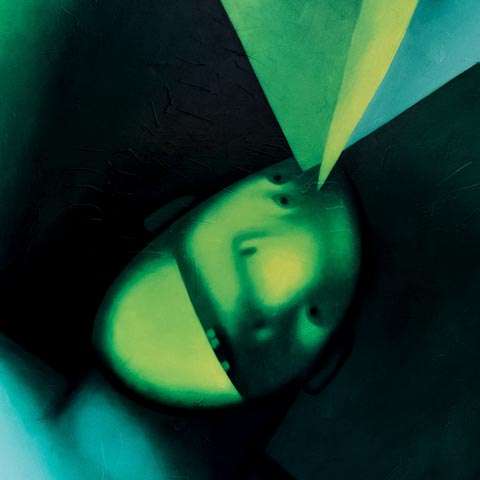
1960s UNOFFICIAL ART
TSELKOV Oleg Nikolaevich (1934–2021) Equilibrist. 2007. Oil on canvas. 130 × 97
Equilibrium is an ancient genre of circus art where the performer performs a balance stunt. Balancing on a rope or holding a pile of difficult objects, and juggling in this position are all variants of equilibrium. Tselkov has the latter option. According to legend, equilibrium in the ancient East appeared among fruit pickers. Peasants often had to drag ladders from tree to tree. And some of them learned to balance on ladders and jump, standing on them, from tree to tree to work faster.
Oleg Tselkov is an artist of life metaphors. His trademark face masks and biomorphic plastics are his toolkit for the visual expression of ideas. He invented this language in the late 1950s and used it until the end of his life.
The work “Equilibrist” is published. Its photo is reproduced in the book “The Russian Palette of Paris: Conversations with Artists” by Yuri Kovalenko and in the catalogue of the exhibition “Oleg Tselkov. Alien”, which was held at the Moscow Museum of Modern Art in the spring of 2022. In the bottom right corner of the picture there is a signature — Oleg Tselkov. The size is more than one meter. The thing is absolutely museum-class.
GROSITSKY Andrey Borisovich (1934–2017) Figure. 1997. Hardboard, oil. 63 × 44
This work, which is compact by Grositsky's standards, has a phenomenally mesmerizing effect. For a week now, it has been hanging in our studio, surrounded by one-meter-long paintings by other venerable artists such as Nemukhin, Sveshnikov and Steinberg. All of them are of museum level. But it is precisely the inverted “3” by Grositsky that catches the eye. The piece is inspirational. “The Poet of Things” made it in three-dimensional effect — and the flat work from a two-meter distance looks completely volumetric, like a counter-relief.
Andrey Grositsky was a sixties artist who developed ideas of the metaphysics of the object world. He was known for his “psychological portraits” of household items — barn locks, old shovels, pieces of iron and pipe fragments. In his performance these unsightly objects were put together into aesthetic still lifes of amazing beauty. The painting “Figure” participated in the personal exhibition “The Life of Things” at the legendary A-3 Gallery in 1997.
SVESHNIKOV Boris Petrovich (1927–1998) Fallen star. 1986. Oil on canvas. 90 × 60
1986 is the heyday of a new milestone divisionist period in Sveshnikov's art. With dots of oil, he weaves a complex network of colors from which phantasmagoric plots emerge. Pillar of light in the background is a plume from a fallen star. Mystical plot that stops the chain of absurd events. And the absurdity in the life of the artist was at most plentiful. On absurd charge he was condemned by firing squad. Because of the absurdity of the charges, the art school student was not shot but was sent to hard labor. Incredibly, he survived. Incredibly, he returned to Moscow. But the horror of the past never ceased to haunt him until the end of his days. The artist led a secluded life, almost never showed his work to anyone. And the scale of his artistic significance became clear only after his death.
KACHAROV Oscar Abramovich (1924–2007) Blue. 2006. Oil on canvas. 100 × 100
Visitors to exhibitions in the 1950s knew the young veteran Oskar Kacharov as the author of heavy, deeply anti-fascist war canvases. He painted, in particular, the paintings “In the Hospital” and “In Fascist Captivity”. The audience must have imagined the artist as a gloomy person. But he was a man of life. And his sincere admiration for a world full of colours is particularly evident in his mature work. Kacharov came to Fauvism in the 1980s. His bright new works were noticed by collectors, and in 2004 they were shown at a personal exhibition in the Tretyakov Gallery.
CONTEMPORARY ART
GINTOVT Alexey Yurievich (1965) Moon and Sun. 2022. Canvas, mixed media. 150 × 100
The moon and the sun against the background of the Kremlin is a new subject for Gintovt's work. Where previously starships in the form of ruby stars had flown by, now a crimson dawn rises.
Alexey Gintovt is an artist-philosopher, a developer of the visualization of an important Eurasian idea. His art is a dream of glorious civilizational victories. But, as Okudzhava wrote, “There is no reliable glory until the blood is shed”. Gintovt continues to pay a heavy price for his convictions. Ever since the Kandinsky Prize, he has been severely criticized by the liberal wing of the art community.
- Log in to post comments










